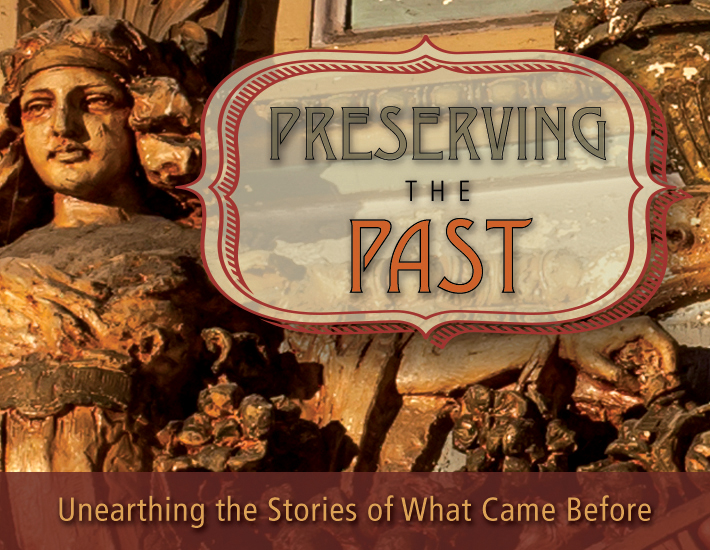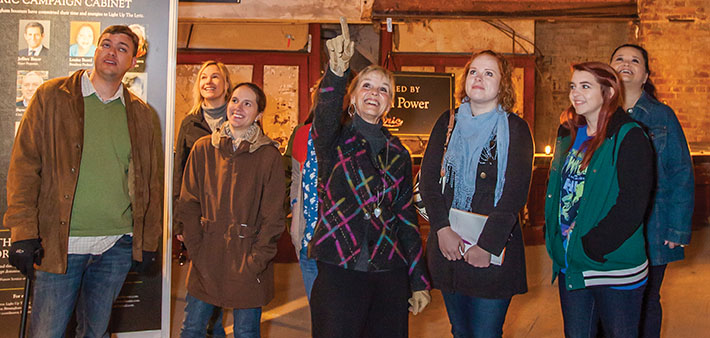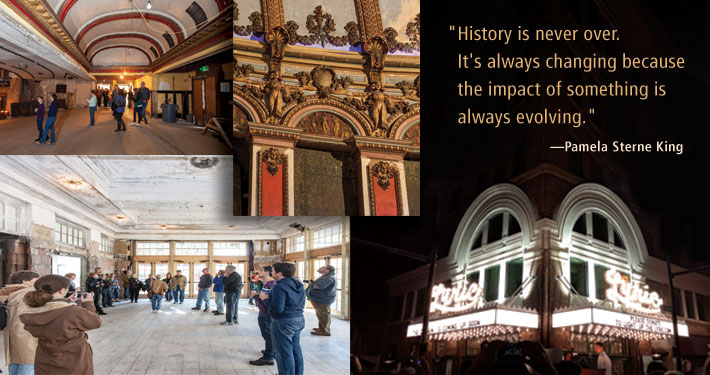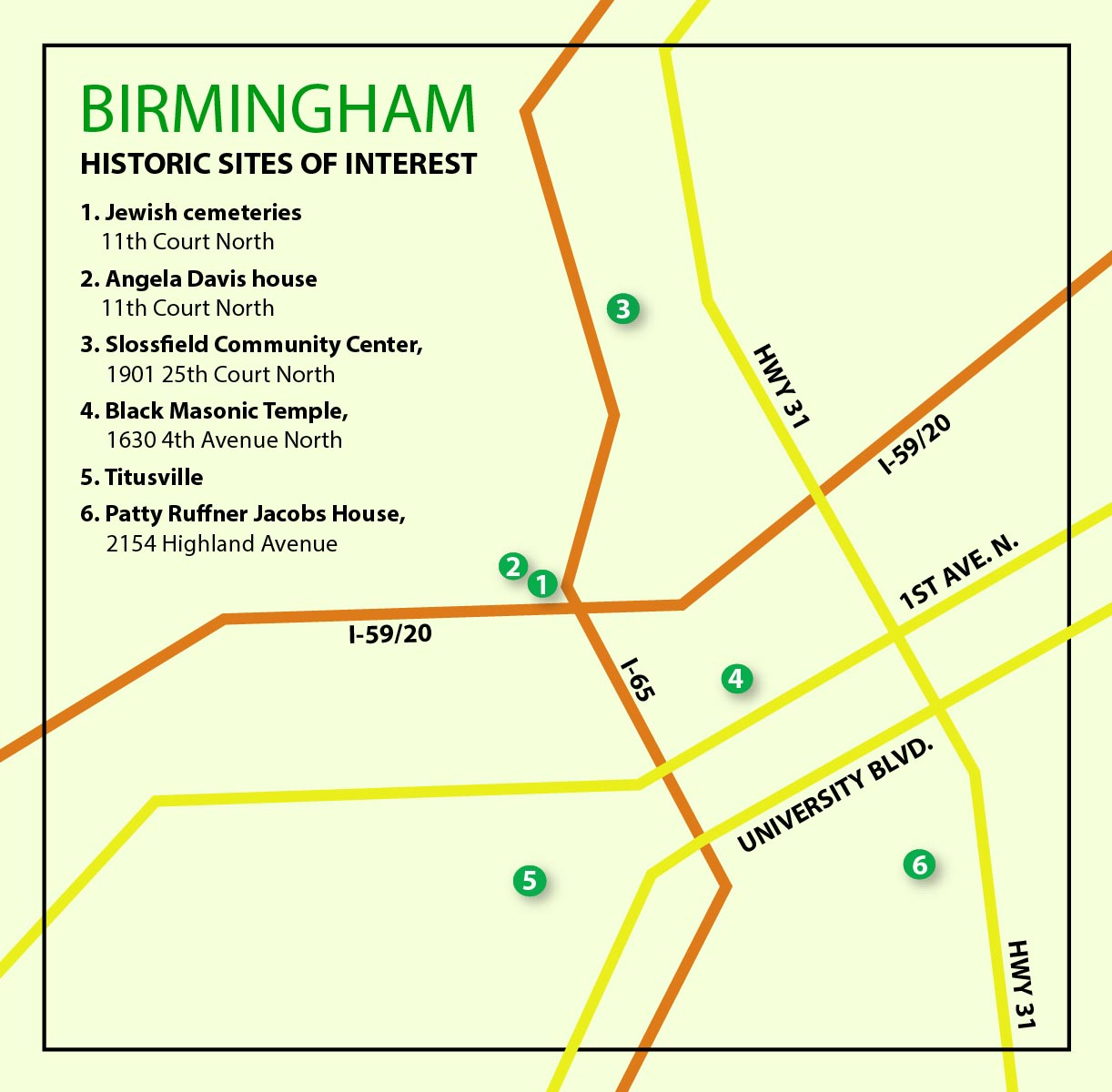
By Meghan C. Davis
As Pamela Sterne King, M.A., leads her students around the long-neglected Lyric Theatre, this monument to Birmingham’s boomtown heyday comes back to life.
The Lyric, built in 1914, is one of the few remaining venues nationwide with the acoustics and close audience seating designed for vaudeville shows. A nonprofit group now owns the theatre and is raising funds to restore it as a performing arts center. King, an assistant professor of history at UAB and former historic preservation officer for the city of Birmingham, wants students to learn about the city’s “often-forgotten fun personality,” she says. She also wants them to witness the revitalization of the downtown theatre and retail district and see the potential for further development.
Detailed inspections of the city’s treasures are a part of King’s Historic Preservation and Public Policy course at UAB, which includes extended walking tours of the city. “My students absolutely love to see where Birmingham’s history was made,” she says.
King launched the course a decade ago to introduce students to the field’s unique blend of academic history, public policy, and advocacy. “To save historic buildings, you have to deal with local, state, and federal laws and work with architects and city planners, real estate developers, and many others,” King says. “Putting it all together is a real puzzle.”
 UAB history professor and historic preservation expert Pamela Sterne King (center) leads students on a tour of renovations at Birmingham's Lyric Theatre. Photo by Art Meripol.
UAB history professor and historic preservation expert Pamela Sterne King (center) leads students on a tour of renovations at Birmingham's Lyric Theatre. Photo by Art Meripol.
The Lyric Theatre project “is so significant for Birmingham,” King says. “Over the last 15 years, I have taken a number of groups, including classes and developers, to see the theatre and excite them about its potential. And I was involved in the early years by talking to architects, preservationists, and city officials about how to preserve it and make it viable for today.”
King’s enthusiasm has inspired many students to follow in her footsteps. David Brewer (B.A., History, 1996; M.A., History, 2002) is now executive director of the Friends of Rickwood, which preserves Birmingham’s magnificent Rickwood Field ballpark. (Read a profile of Brewer.) Stacey Browning (M.A., Art History, 2006) was the historic preservation planner for the city of Tuscaloosa and is now the city’s land use controls manager, Heather Guy (M.A., History, 2008) is director of education at Birmingham’s Sloss Furnaces National Historic Landmark, and Katie Sutton Randall (B.A., History, 2008) helps preserve Civil War battlefields for the state of Tennessee.
Current UAB senior Taylor Stewart, who is majoring in history and public relations, says King’s class “cemented my choice” to pursue historic preservation in graduate school. “I was most excited about learning about preservation efforts in Birmingham, especially being able to tour the Lyric Theatre before it was completely restored,” Stewart says.
Fellow senior and history major Blake Crow was also hooked. “I had not taken a public history course and was surprised to learn how many opportunities there were for hands-on learning in the field,” Crow says. “This city truly does have a magical history, and its impact can still be felt today.” That realization is the key message of her preservation course, King says. “I always tell my students that history is never over,” she explains. “History is about consequences. It’s always changing because the impact of something is always evolving.”
 Interior photos by Art Meripol. Exterior photo by Charles Buchanan.
Interior photos by Art Meripol. Exterior photo by Charles Buchanan.City Scene
Historic preservation expert—and UAB history faculty member—Pamela Sterne King, M.A., reveals some hidden pieces of the past that are essential to Birmingham's story. (See map below.)1. Jewish cemeteries
Two cemeteries, divided by 11th Court North, serve as a chronicle of the city's Jewish community from the 1800s through the 20th century. Graves mark the resting place of immigrants and entrepreneurs who founded some of Birmingham's most well-known retailers.
2. Angela Davis House
Davis was "the country's most famous black radical in the early 1970s," says King. Now a professor at the University of California, Davis grew up in a home on 11th Court North, in a neighborhood known in the 1960s as "Dynamite Hill" for its violent racial conflict.
3. Slossfield Community Center
The Art Deco structure at 1901 25th Courth North was built by the American Cast Iron Pipe Company, black workers, and the federal Works Progress Administration in the 1930s as a medical, education, and recreation complex for the neighborhood. It was added to the National Register of Historic Places in 2008.
4. Black Masonic Temple
Built in 1923, the seven-story, Neoclassical Revival-style structure at 1630 4th Avenue North was a center of social life for African-Americans in Birmingham during segregation. It played a prominent role during the Civil Rights Movement as an office for lawyer Arthur Shores and several advocacy groups, including the Southern Negro Youth Congress and the NAACP. Today the building is still home to the city's African-American Masons.
5. Titusville
This relatively affluent neighborhood was known as the "Negro Mountain Brook"—after the upscale over-the-mountain enclave—in the 1950s. Former Secretary of State Condoleezza Rice grew up in the neighborhood.
6. Patty Ruffner Jacobs House
Alabama's leading suffragist of the early 20th century lived in a Victorian-style residence at 2154 Highland Avenue. It once was surrounded by other mansions on one of Birmingham's toniest streets.

Get Involved
• Learn more about UAB's academic programs in history.
• Give something and change everything for students in the UAB Department of History.